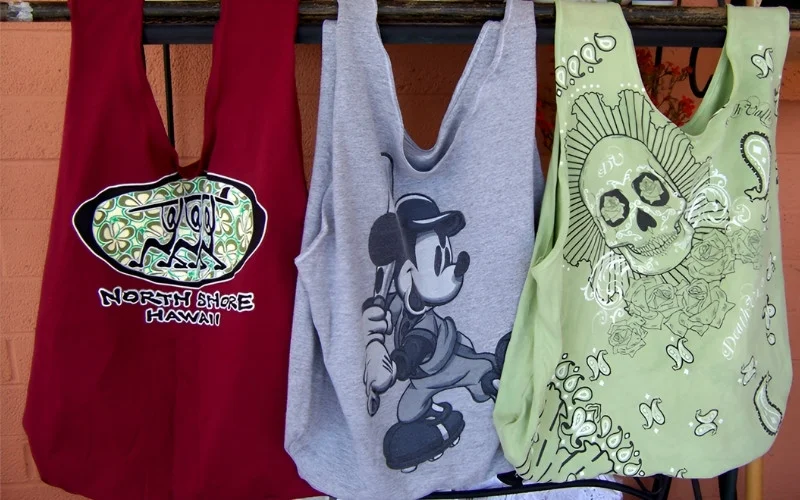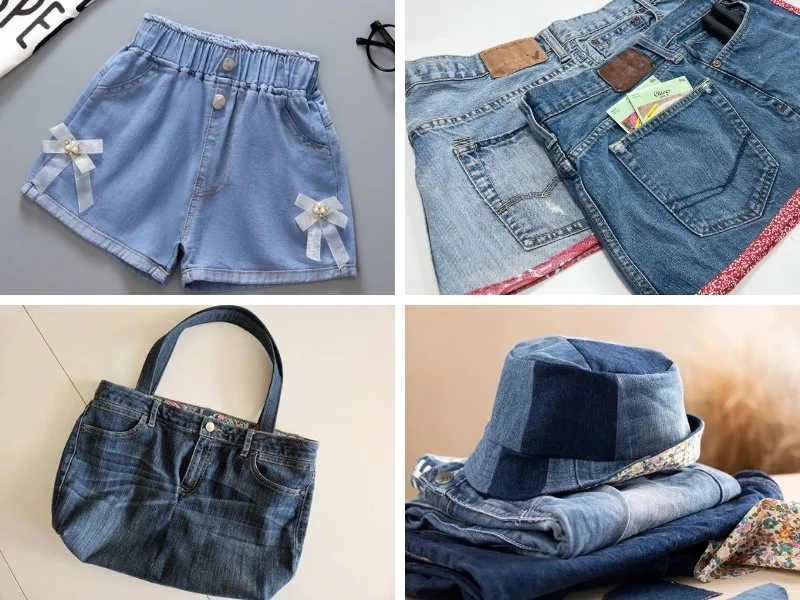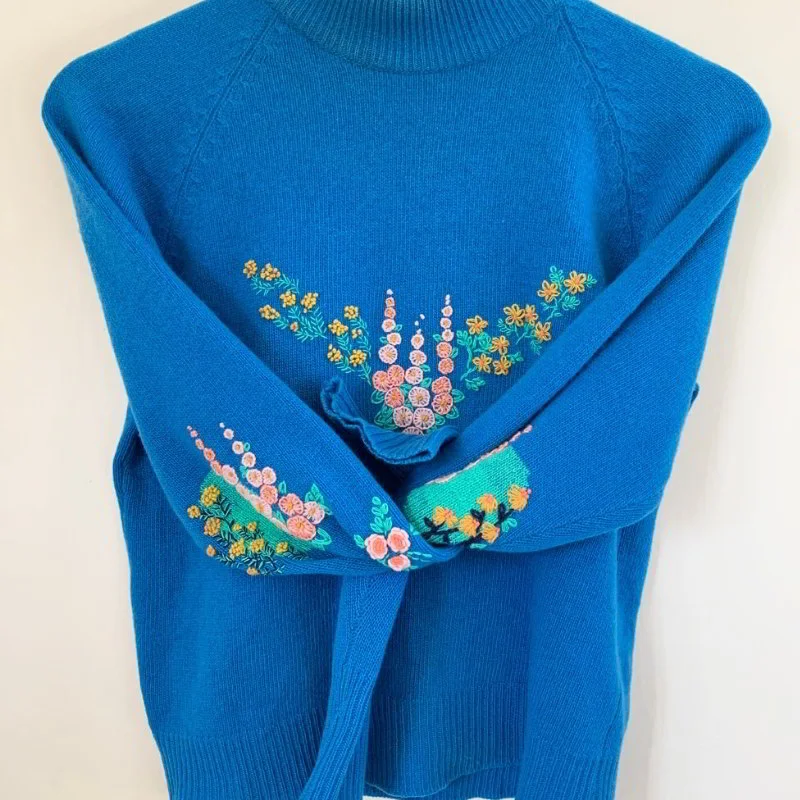Upcycling Clothing Ideas: Transform And Reduce Waste
This article will explore the world of upcycling, offering a wealth of ideas to transform old clothes into stylish new pieces. Readers will learn about the significant environmental impact of textile waste and fast fashion, discover how upcycling can help them save money, and unleash their inner creativity to develop a unique, sustainable style.
1. What is upcycling clothing and why is it important?
Upcycling clothing involves taking old, worn, or unwanted garments and transforming them into something new and valuable. Unlike recycling (breaking down materials to create raw materials) or downcycling (converting materials into something of lesser value), upcycling increases the value and extends the lifespan of the original item.
The fashion industry is a major contributor to global waste. Consider these points:
- Textile waste: A shocking amount of clothing ends up in landfills every year, contributing to pollution and taking up valuable space.
- Fast fashion: The rise of fast fashion, with its focus on cheap, trendy clothing, encourages a cycle of buying and discarding, further exacerbating the problem.
- Environmental impact: Producing new clothing requires vast amounts of resources, including water, energy, and raw materials. It also generates pollution through manufacturing processes and transportation.
Upcycling offers a sustainable alternative. It addresses these issues by:
- Reducing waste: It keeps clothes out of landfills.
- Conserving resources: It reduces the demand for new clothing production.
- Promoting ethical fashion: This approach combats the negative impacts of fast fashion.

2. Getting started with upcycling clothing: Your first steps
Ready to give those forgotten items in your closet a new purpose? Here’s how to begin your upcycling journey:
- Wardrobe assessment: Go through your closet, identifying pieces that you no longer wear, that don’t fit, or are slightly damaged.
- Consider the potential: Don’t immediately discard items. Instead, think about how they could be altered, combined with other pieces, or used for different purposes.
- Gather basic supplies: Sewing machine (optional, but helpful for many projects), scissors (fabric scissors are best), thread (in various colors), needles (for hand sewing), fabric glue (for no-sew projects), measuring tape, pins, fabric scraps (leftover pieces from other projects or old clothes).
Many individuals hesitate to start upcycling, feeling they lack the necessary skills or creativity. However, it’s important to remember that upcycling doesn’t always require expert sewing abilities. Many simple projects involve basic cutting, tying, or gluing. Start with small, manageable projects and gradually increase the complexity as you gain comfort and develop your skills.
3. Upcycling ideas for T-shirts: From basic to bold
T-shirts are incredibly versatile for upcycling, offering a wide range of possibilities for both beginners and experienced sewers.

3.1 No-sew T-shirt transformations: Quick & easy
These projects require no sewing, making them perfect for anyone who wants to get started immediately:
Crop top:
- Lay the t-shirt flat.
- Decide on the desired length of the crop top.
- Using sharp scissors, cut straight across the shirt at the chosen point.
- Optional: Create a fringe by cutting vertical strips along the bottom edge.
Tank top:
- Lay the t-shirt flat.
- Cut off the sleeves, following the existing seam as a guide.
- Optional: Cut a deeper neckline or modify the shape of the armholes.
Head wrap/headband:
- Cut a wide strip of fabric from the body of the t-shirt.
- Tie the strip around your head, adjusting for a comfortable fit.
Tote bag/produce bag:
- Cut off the sleeves and neckline of the t-shirt.
- Turn the shirt inside out.
- Use fabric glue to seal the bottom edge of the shirt closed.
- Turn the bag right side out. The neckline becomes the opening of the bag.
3.2 Sewing T-shirt transformations: Level up your skills
These projects involve some basic sewing, either by hand or with a machine:
T-shirt dress:
- Combine multiple t-shirts of different colors or patterns.
- Cut the shirts into panels or sections.
- Sew the pieces together to create a dress shape.
T-shirt skirt:
- Cut off the top portion of a t-shirt, leaving the bottom section.
- Add an elastic waistband to the top edge.
Add pockets:
- Cut pocket shapes from contrasting fabric (another old t-shirt or fabric scraps).
- Sew the pockets onto the front or sides of a t-shirt.
T-shirt quilt/blanket:
- Cut t-shirts into squares or rectangles of equal size.
- Sew the pieces together to create a patchwork design.
- Add a backing fabric and batting (optional) for warmth.
4. Upcycling ideas for jeans: Denim delights
Denim is a durable and versatile fabric, making old jeans perfect for a variety of upcycling projects.

4.1 No-sew jeans upcycling: Instant gratification
Cut-off shorts:
- Lay the jeans flat.
- Decide on the desired length of the shorts.
- Use chalk or a fabric marker to draw a cutting line.
- Cut along the line with sharp scissors.
- Optional: Create a frayed edge by pulling out some of the horizontal threads.
Distressed jeans:
- Use sandpaper, a pumice stone, or a razor blade to create distressed areas on the jeans.
- Create small holes or tears by carefully cutting with scissors or a seam ripper.
Denim patches:
- Cut out interesting sections of denim from old jeans (pockets, seams, etc.).
- Use fabric glue or sew the patches onto other clothing items to add a decorative touch or cover up holes.
4.2 Sewing jeans upcycling: Unleash your inner designer
Skirt:
- Open the inseam of the jeans.
- Cut off the legs.
- Use the remaining fabric to fill the front and back.
Tote bag/backpack:
- Cut the legs off the jeans.
- Sew the bottom edge of the jeans closed.
- Create straps from the leftover denim or use other materials (rope, webbing, etc.).
Denim quilt:
- Cut jeans into squares or rectangles of equal size.
- Sew the pieces together to create a patchwork design.
- Add a backing fabric and batting for warmth.
Embellishments: Add decorative elements to jeans, such as:
- Fabric scraps (sewn or glued on)
- Embroidery
- Beads, sequins, or studs
- Visible mending (see below)
5. Visible mending and creative embellishment: Flaunt your flaws
Visible mending is a technique that turns repairs into a design feature. Instead of trying to hide mends, visible mending uses colorful threads, patches, and decorative stitches to highlight the repair and add a unique touch to the garment. This is a great idea for people who love crafting.
Techniques:
- Embroidery: Use embroidery floss to create decorative patterns or designs over holes or tears.
- Patches: Apply patches of contrasting fabric over holes, using decorative stitches (blanket stitch, running stitch, etc.) to secure them.
- Darning: Use a needle and thread to weave a new patch of fabric over a hole, creating a visible repair.
- Decorative stitching: Use various hand-sewing stitches (satin stitch, chain stitch, French knots, etc.) to add embellishments and reinforce areas.

6. Related questions
6.1 Can all types of clothing be upcycled?
Yes, most types of clothing can be upcycled, although some materials may be easier to work with than others. Stretchy fabrics, like those found in t-shirts, are often more forgiving for beginners.
6.2 What if I do not have a sewing machine?
Many projects can be completed without a sewing machine. Fabric glue can be used to add cute embellishments or for simple mending, and you can also learn some easy hand-sewing techniques for other projects.
6.3 What are the benefits of upcycling clothes?
There are numerous advantages. It’s often cheaper to upcycle existing or thrifted clothes than to buy new, and importantly, you’re helping the environment by reducing textile waste. Plus, you get to express your creativity and develop a unique style.
Read more:
Upcycling clothing offers a powerful combination of benefits: environmental responsibility, cost savings, and creative expression. Businesses and individuals can create a unique style, showcasing their commitment to sustainability while reducing textile waste and conserving valuable resources. By transforming old clothes into new treasures, everyone can contribute to a more circular and conscious approach to fashion






















